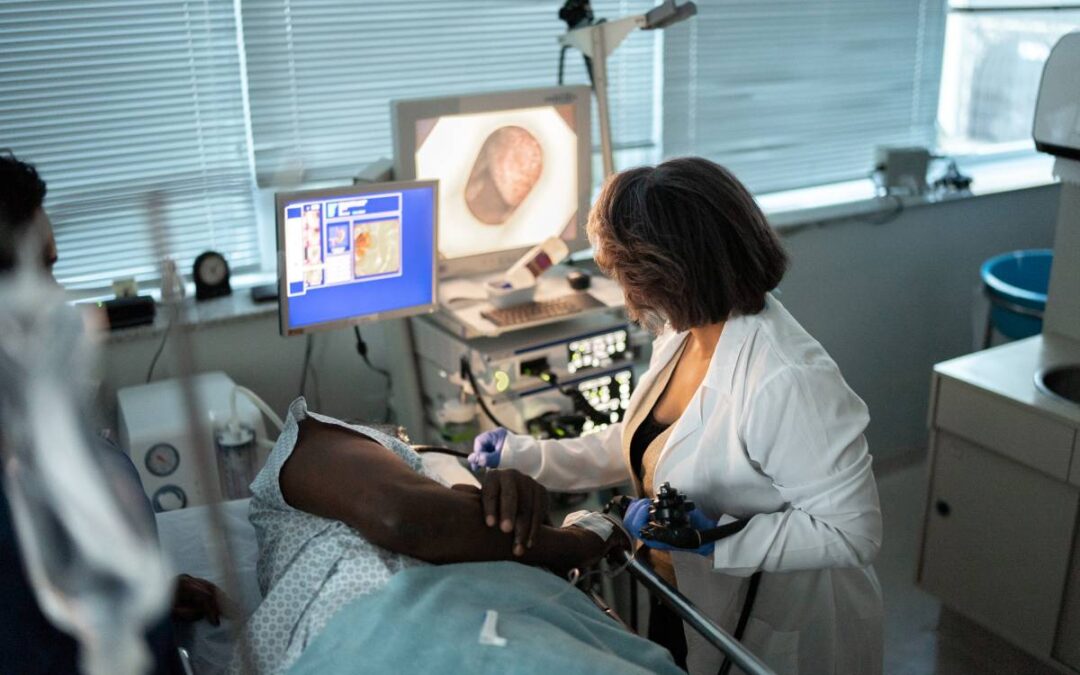Most non-emergent gastrointestinal procedures require only mild to moderate levels of sedation. More invasive procedures historically required the presence of a trained anesthesiologist in the operating room to maintain patient analgesia and sedation. However, the presence of an anesthesiologist involves the use of additional resources and personnel, making the procedure more costly. For some routine, low-risk but invasive procedures, like gastrointestinal endoscopy, anesthesia has not always been used for these reasons, though this scenario can involve substantial patient discomfort, particularly in the case of complications. The physician performing the procedure can usually administer medication to provide basic levels of pain relief and sedation without an anesthesia provider – this is the case for minor procedures in several specialties, including GI. However, in recent years, non-operating room anesthesia (NORA) has become increasingly popular as a more cost- and resource- effective as well as less painful compromise for low-risk gastrointestinal procedures. This has made sedation administered by an anesthesia provider more common for GI procedures. In fact, according to a 2018 review article by Lin and Weigel on NORA for gastrointestinal surgeries:
“Over the span of a decade, there has been a threefold to four-fold increase in the prevalence of anesthesia involvement in routine outpatient endoscopic procedures on low-risk patients in the United States, with propofol sedation rates going from 14% in 2003 to 48% in 2013 for Medicare patients, and from 14% in 2003 to 53% in 2013 for privately insured patients.” [1,2,3,4]
For patients who require deeper sedation for their gastrointestinal procedure (i.e.: due to risk of complications or procedure complexity/duration), the standard of care is typically administration of propofol, a widely used and well-studied anesthetic which can be delivered intravenously. Because of its high potency, low risk of complications, and rapid recovery times, propofol is the dominant choice of anesthetic for gastrointestinal endoscopy NORA [5,6]. Some have proposed that propofol can be administered for GI procedures without an anesthesia provider in two ways: by a trained nurse, either as a single injection or continuously, or with the assistance of a computer. Notably, computer-assisted NORA is no longer an available commodity. The company who gained initial FDA approval for their SEDASYS NORA administration and monitoring system (Ethicon Endosurgery out of Cincinnati, Ohio) eventually stopped producing this line of product due to lack of profitability [1]. However, it is possible that other forms of computer-assisted NORA may become available again in the near future.
In parts of Europe, nurses can receive special training to administer propofol off-label for routine gastrointestinal procedures in order to achieve moderate sedation, although transient states of deep sedation are possible in any anesthesia context and may occur. However, the US FDA requires that propofol be administered by personnel trained in anesthesia. Contraindications for nurse-administered sedation include patients with comorbidities of ASA physical status classification of three or more [1].
As pointed out by Lin and Weigel, anesthesia for GI procedures without an anesthesia provider is a relatively unexplored area in the US, and it also is a gray area for patients as far as insurance coverage and payout. However, the authors do note that increased prevalence of nurse-administered propofol sedation in Europe – Germany, Switzerland, and Sweden in particular – may provide information about its safety and potential benefits and drawbacks.
References
1. Lin, O. S., & Weigel, W. (2018). Nonoperating room anesthesia for gastrointestinal endoscopic procedures. Current opinion in anaesthesiology, 31(4), 486–491. https://doi.org/10.1097/ACO.0000000000000610
2. Inadomi, J. M., Gunnarsson, C. L., Rizzo, J. A., & Fang, H. (2010). Projected increased growth rate of anesthesia professional-delivered sedation for colonoscopy and EGD in the United States: 2009 to 2015. Gastrointestinal endoscopy, 72(3), 580–586. https://doi.org/10.1016/j.gie.2010.04.040
3. Predmore, Z., Nie, X., Main, R., Mattke, S., & Liu, H. (2017). Anesthesia Service Use During Outpatient Gastroenterology Procedures Continued to Increase From 2010 to 2013 and Potentially Discretionary Spending Remained High. The American journal of gastroenterology, 112(2), 297–302. https://doi.org/10.1038/ajg.2016.266
4. Khiani, V. S., Soulos, P., Gancayco, J., & Gross, C. P. (2012). Anesthesiologist involvement in screening colonoscopy: temporal trends and cost implications in the Medicare population. Clinical gastroenterology and hepatology : the official clinical practice journal of the American Gastroenterological Association, 10(1), 58–64.e1. https://doi.org/10.1016/j.cgh.2011.07.005
5. McQuaid, K. R., & Laine, L. (2008). A systematic review and meta-analysis of randomized, controlled trials of moderate sedation for routine endoscopic procedures. Gastrointestinal endoscopy, 67(6), 910–923. https://doi.org/10.1016/j.gie.2007.12.046
6. Wang, D., Chen, C., Chen, J., Xu, Y., Wang, L., Zhu, Z., Deng, D., Chen, J., Long, A., Tang, D., & Liu, J. (2013). The use of propofol as a sedative agent in gastrointestinal endoscopy: a meta-analysis. PloS one, 8(1), e53311. https://doi.org/10.1371/journal.pone.0053311







Recent Comments